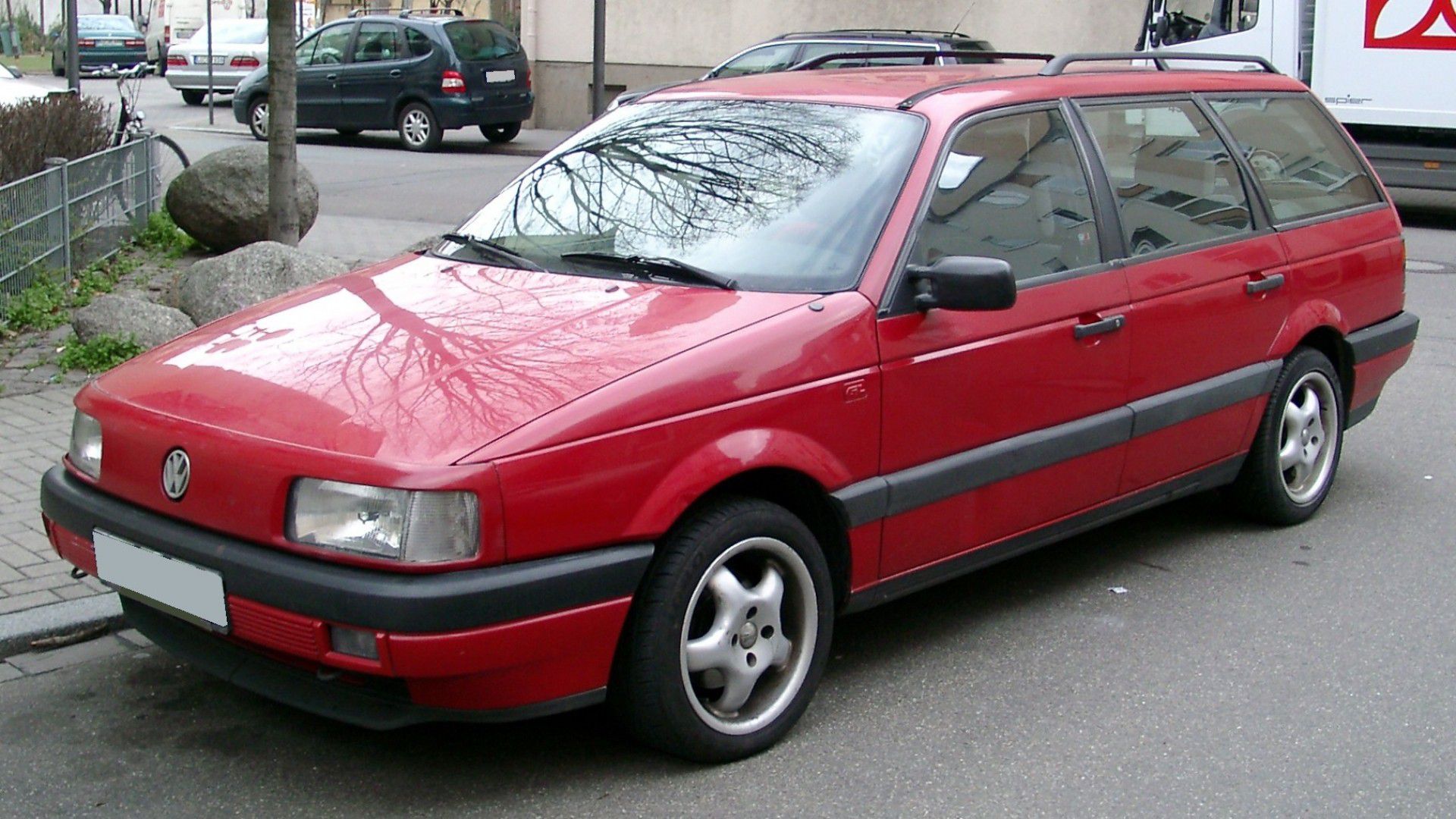Volkswagen Passat B3
The VW Passat B3 is a model of the middle class of Volkswagen. It was introduced in 1988 as a successor to the VW Passat B2. In the course of the transition from B2 to the new model is presented to on transverse engines, this measure is the magnification of the interior benefit. Presented was the estate version of “Variant” in June 1988, two months after the launch of the sedan version. The Passat B3 was produced at the VW plant in Emden. In October 1994, the sedan was the B3 replaced by the successor VW Passat B4.
The external appearance was in 1981, anticipated by the study VW car 2000. The grille has been dropped in favor of better aerodynamics, but this measure did not enjoy unanimous consent. In the aftermarket grille were dummies after a short time offered for sticking or exchange to the Passat More normal To give appearance.
The Passat B3 was the first VW with flush glued discs all round. The smooth-surfaced body has a drag coefficient of about 0.29, the maximum speeds increased in comparison to the previous model. Unlike its predecessor, there are only two body styles: notchback sedan and Variant. The almost fully developed five-door hatchback variant was discarded. Ever since the introduction of the model VW Passat B3 running with a partially galvanized self-supporting body from the tape.
(Equipment sporting) CL (basic equipment), GL (designed for comfort) and GT: Offered was the B3 Passat in three equipment lines. Special models (eg Arriva Edition One Comfort Edition Trend, Etc.) are not included in the following collections.
Thanks to the concept front wheel drive with transverse engine a lush even by today’s interior was designed, therefore, came the name Space miracle. From the accelerator to the rear seat backs, the distance was two meters, which made especially for an excellent seating comfort of rear passengers. Regardless of whether CL, GL or GT, almost every touch was available for the three basic configurations. Among other things:
The Passat had a relatively extensive safety features for its time. It gave him from 1988 with optional ABS, from December 1992 airbags and seat belt pretensioners. The more powerful models were equipped with an electronic differential lock (ABS with EDL), which prevented a wheel spin up to about 40km/h. The body structure and their crumple zones corresponded to the former findings on passive vehicle safety. These is the foamed dashboard, by its construction, the head-limit loads could be reduced in the crash test.
Because of the cross-installation of these engines were not allowed to be longer than a four-cylinder. Only through the development of the VR engine and a six-cylinder could be installed. The power scale of production engines in B3 ranged from 53 kW (72hp) (carburetor) to 128 kW (174hp) VR6 (from 1990). Between 1988 and 1992 there was also the Passat G60 with four-cylinder engine and G-Lader. The diesel engines were swirl chamber engines with or without turbocharging. Their performance was between 50 and 59 kW (68 and 80hp). In Austria there was only the turbocharged diesel engine and 80hp.
In addition to front-wheel drive was for the Passat with 85 kW motor (115hp) at the request of the all-wheel drive (Syncro) available.
The built-in Golf II G60 was also used in the Passat B3. The 118 kW (160hp) engine accelerated the Passat to 215km/h The most striking feature of this model were, except the red G60 logos on front and rear, 15-inch alloy wheels with the vierlöchrigen screw cover. The version with the G60 was sold exclusively with four-wheel drive (Syncro).
133174
